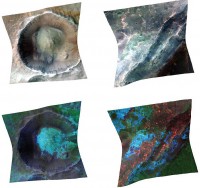Impact cratering and erosion combine to reveal the composition of the Martian underground by exposing materials from the subsurface. (Image credit: NASA/JPL-Caltech/JHUAPL)
Home Impact cratering and erosion combine to reveal the composition of the Martian underground by exposing materials from the subsurface. (Image credit: NASA/JPL-Caltech/JHUAPL) Impact cratering and erosion combine to reveal the composition of the Martian underground by exposing materials from the subsurface. (Image credit: NASA/JPL-Caltech/JHUAPL)



